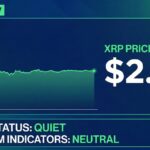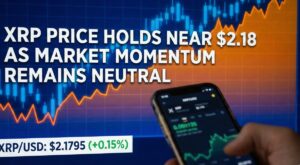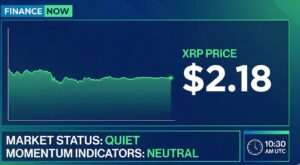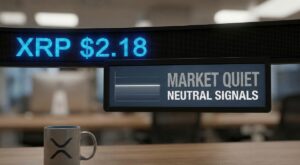As more and more crypto traders are using Bitcoin (BTC) as a margin in futures trading, it is unlikely that the largest cryptocurrency will ever lose its reputation as a volatile and unpredictable asset.
Data monitored by Glassnode shows that since July, the portion of bitcoin futures open interest margined with bitcoin increased from about 20% to 33%. 65% of the entire open interest is still in cash or stablecoin margined contracts.
Unlocking Crypto Futures: The Growing Interest in BTC-Margined Contracts
With futures, crypto traders can increase their exposure to the market by putting down a smaller fraction, or “margin,” of the overall contract value. This margin is a small proportion of the total contract size, and the exchange covers the remainder of the trade’s value. According to research source Blockware Intelligence, the resurgence of interest in BTC-margined contracts raises the possibility of liquidation cascades that increase volatility. That happens when a series of liquidations, or forced closings of positions due to margin shortfall, take place in quick succession, which causes an altering of prices.
In a recent weekly newsletter, Blockware Intelligence analysts noted that using BTC as collateral for a BTC derivative implies a doubled risk component. They highlighted that a decline in the price of BTC could quickly push you towards your liquidation point if you hold a long position in Bitcoin with Bitcoin posted as collateral. This occurs as a result of the collateral’s value reducing while the price of bitcoin is falling. They also mentioned the substantial risk involved in using BTC during its monetization phase and advised against doing so. They pointed out that the market’s intrinsic volatility could completely wipe out your position even if your directional prediction is accurate.
Coin-margined contracts are quoted in dollars but settled and margined in cryptocurrencies. In other words, crypto traders experience a non-linear reward where they gain less when the market rises and lose more when the market falls since the collateral is just as volatile as the position.
Therefore, when the price of bitcoin in dollars declines, a long position not only loses money, but the collateral also depreciates in value, compounding losses. A reasonably quick margin gap and potential liquidation follow after that.
The trend is concerning because it raises the possibility of frequent cascade liquidations, which would increase volatility should coin-margined contracts gain traction. Before September 2021, when coin-margined contracts comprised more than 50% of the worldwide open interest, such occurrences were typical.
Blockware claims that an upsurge of interest in these contracts is an indication of a cash scarcity in the market. This number has gone up a lot in the past few months, which is strange. They added that it could mean that crypto traders are running out of cash and are using their BTC as a last option to increase their exposure.
For some time now, liquidity has been leaving the cryptocurrency market. According to CCData, the total market value of all stablecoins fell by 0.4% in August to $125 billion. This was the 17th month in a row that the value of all stablecoins went down. CoinGecko data show that the market value of tether (USDT), the world’s biggest stablecoin by market value, dropped by almost $1 billion in the last four weeks, to $82.87 billion.
Takeaways
As BTC gains ground as margin collateral in crypto futures trading, it solidifies its reputation as a volatile asset. The surge in BTC-margined contracts, as shown by Glassnode data, signals a growing trend. However, this brings inherent risks, including liquidation cascades and increased market volatility.




























